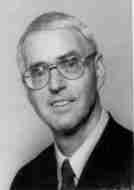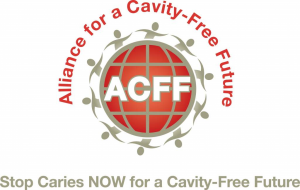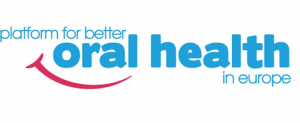
NEWSLETTER Number Three December 2000
DANISH SOCIETY OF PEDIATRIC DENTISTRY
30th MEETING OF ΤΗE HELLENIC SOCIETY OF DENTISTRY FOR CHILDREN
£1000 EAPD PRIZE IS AWARDED TO ΑNÎΑ MANAKOU, ATHENS, GREECE
THE MARTIN CURZON RETIREMENT SYMPOSIUM, 20-22nd OCTOBER 2000, LEEDS
 Dear Colleagues
Dear Colleagues
The new Board had its first meeting in connection with the Martin Curzon Retirement Symposium in Leeds on October 20th. It was a pleasure for me to get to know that my colleague Board members had used the few months since we were elected to establish routines and take responsiÂbilities. Ι am sure that we will make a good team. There is a number of matters that we decided to deal with:
Increasing the membership
If the EAPD is going to grow, both in quantity and quality, we should attract more colleagues from all over Europe to become members. And, since our Academy is not only for dentists with full Specialist qualifications (Active Members), but also for others working in the field of Paediatric Dentistry (Associate Members), there is obviously a potency for a considerable increase in memberÂship beyond the present 400. More members will hopefully initiate more activity and increased stimulation for continued education, specialisation and subsequently a higher quality of dental care for children. The fact that one has to apply for membership of the EAPD may seem as an obstacle for some people. However, we will do our utmost to handle all applications fairly, safely and effectively. So, go ahead and recruit new members to our Academy. ApplicaÂtion forms can be obtained from the Secretary and are also available from the EAPD web page http://www.eapd.gr/
More member societies
In order to increase the spreading of our Academy to include more European countries, the Board wants to encourage National Societies to apply for membership of the Council. However, this requires the local organisation of a number of members who also are members of the EAPD, and that a Council member has to be elected by these members.
National/regional meetings
In order to create increased activity among EAPD members, the board wants to encourage councillors and other members to arrange more national or regional meetings. Even if the Academy is not able to give such meetings direct financial support, we may be used for scientific advice, co-ordination of time and place, and advertising through the Newsletter and the web page. More meetings and increased collaboration between national/regional societies and the EAPD will reinforce our organisation and thereby the efficiency of our work.
Accreditation of education programmes
One of the most important goals for the EAPD is to maintain and improve the quality of advanced education in Paediatric Dentistry in Europe. The implementation of The Accreditation Standards for Advanced Education Programs of Paediatric Dentistry in the European Union, outlined by the EAPD Education Committee, is probably one of the most important milestones in our efforts to reach this goal. During 2001 we will carry out the accreditation process in two well-recognised institutions for post-graduate training in our field, namely Jonkoping in Sweden and Leeds in the UK. We hope that this will be the start of a process that initiates the motivation for a number of schools in Europe to consider their own training and have them approved by the EAPD.
Policy documents
In the first issue of the European Journal of Paediatric Dentistry we published the EAPD guidelines for the use of fluorides in children. The board wants to continue this line of making policy documents, and we have now initiated three more:
1) Use of antibiotics, 2) Radiographs, 3) Fissure sealants. Three groups of researchers with special insight in these subjects have been appointed, and they will hopefully be able to present their proposals at the 6"' EAPD Congress in Dublin in June 2002.
The next Board Meeting will be held in Brussels on March 3rd next year. Please do not hesitate to contact any of the Board members or myself if you have any comments, ideas or complaints about our activities.
Finally, Ι take this opportunity to wish all our members α Merry Christmas and α11 the best for the New Year.
Kind regards from
Magne Raadal
DANISH SOCIETY OF PEDIATRIC DENTISTRY
Our new Danish Society of Pediatric Dentistry is now just one year old and we feel it is time to present ourselves through a short report. The purpose of the Society is to promote Pediatric Dentistry in order to improve the oral health of children and adolescents and assure high quality in prevention, diagnosis and care. Α working group comprising colleagues with long and extensive experience in Pediatric Dentistry and child dental care prepared the founding of the Society, which took place in March 1999.
The present Board members are: Professor Sven Poulsen (President), Chief Dental Officer Peter Simonsen (Treasurer), Professor Sven Kreiborg, Deputy Chief Dental Officer Anna-Lena Hallonsten, and Dental Officer Else Sommer Boysen. The Society now has approximately 100 members.
In connection with the founding of the Society we organized a half-day course on mineralisation disturbances (given by Professor Allan Brook, Sheffield) and a half-day course on medical technology assessment. Approximately 100 colleagues attended the course and the general assembly.
The course in connection with this year's general assembly was a one-day course on clinical genetics with special reference to dental, oral and facial structures. The course was given by Professor Sven Kreiborg and Assistant Professor Erik Niebuhr, both from University of Copenhagen. Again, the course was well attended.
At the moment 8 members have formed a working group with the purpose of studying Danish dentists' knowledge, attitudes and practice in relation to pain management during dental treatment of children and adolescents. The reason for forming this working group is the obvious importance of painless dentistry. Furthermore, recent research has generated a considerable amount of knowledge that needs to be analysed and probably adopted by Pediatric Dentists. We are planning to launch a questionnaire study among Danish dentists later this year or early next year.
Α planned activity is α Symposium on "Children and Pain" in October. We also plan to look into the issue of speciality training in Pediatric Dentistry and intend to broaden our international contacts.
The first year of our Society's life has been intense but rewarding. Our assumption of a need for a society to further promote professional knowledge in Pediatric Dentistry as a foundation for high quality oral and dental care for young people has proved to be correct. We look forward to continuing and expanding our activities - if possible in collaboration with similar societies in other European countries. Anybody interested in contacting us can do so in the following address:
Danish Society of Pediatric Dentistry
c/ο Professor Sven Poulsen
Department of Community Oral Health and Pediatric Dentistry
Royal Dental College, Faculty of Health Sciences
9 Vennelyst Boulevard
DK-8000 Arhus C,
Denmark
phone: +45 89 42 4144
fax: +45 8613 65 50
e-mail: spoulsen@odont.au.dk
30th MEETING OF THE HELLENIC SOCIETY OF DENTISTRY FOR CHILDREN
From the 19th to the 21st May 2000 the 30th Meeting of the Hellenic Society of Dentistry for Children took place. As its number implies, it was an anniversary meeting of the Society, which this year celebrates the 40th anniversary of its foundation. The main theme of the Meeting was "Thirty years of care for the child - Perspectives for tomorrow's challenge".
Due to the formality of the occasion, prominent guest speakers were invited, such as Professor L. Martens, President of the Ε.Α.Ρ.D., Associate ProÂfessor R. Widmer, President of I.A.D.C. and ProÂfessor M. Houpt, President of the A.A.P.D., Associate Professor Α. Konstantopoulos President of the Hellenic Society of Pediatrics and Professor Merope Spyropoulos Head of the Dept. of Orthodontics of Athens University
The organizing committee chaired by Professor Liza Papagiannoulis did an excellent job in providing a scientific programme characterized by such variety and high quality. The Meeting was preceded by a pre-Congress seminar given by Professor M. Houpt. The subject of the seminar was "Pharmacological management of children's behaviour in the dental office". It was a very interesting seminar analyzing in depth the concept of sedation, as it is perceived more or less, in the U.S. as the speaker included statistics about the practice of sedation in this country. Fifty dentists attended the Seminar.
At the opening ceremony Professor Papagiannoulis the President of the Society, gave a speech, which was a moving flashback of the history of the society. All the past Presidents and everybody who had worked for the development of the Society was mentioned in her very thorough speech. The scientific programme included:
Α. Four lectures given by the guest-speakers:
1) "The use of polymer dental materials for the restoration of primary and permanent teeth", L.Martens. Professor Martens gave an interesting lecture on the subject of polymer dental materials, based on scientific evidence, which was very useful for clinicians.
2) "The examination of the child's face, α basic Ïarameter for the assessment of his health", R.Widmer. Ιn this fascinating speech, Assoc. Professor R. Widmer analyzed in depth how the facial structure reflects the health status of the child.
3) "Evolutions in Paediatrics concerning the treatment of chronic diseases and their relation to oral health", A. Konstantopoulos. Assoc. Professor A, Konstantopoulos gave a very interesting speech on the evolutions of Paediatrics in treating chronic diseases, and how they can modify the dental treatment planning of the child
4) "Early orthodontic treatment: is it a necessity or over-treatment?", M. Spyropoulos. Professor M. Spyropoulos gave an enlightened speech on a much-debated subject, discussing the problem of primary and mixed dentition orthodontic needs.
Î’. Three round tables:
1) "Dysplasia of the hard dental tissues". In this round table chaired by Assistant Professor C. Oulis the newest aspects on the incidence, etiology and treatment of dental dysplasias were thoroughly analyzed by experts in the field
2) "Adhesion of polymer dental materials to the primary and permanent teeth". Professor G. Vougiouklakis chaired this round table in which excellent researchers in the field of dental materials and dental biology, commented in depth on the subject of tooth structure and adhesion
3) "Undergraduate and postgraduate training in Paediatric Dentistry". This round table chaired by Professor A. Angelopoulos had an important subject, the subject of how to educate the Paediatric Dentists of the future. There was a fortunate meeting of four very experienced teachers, Professors M.Houpt, L.Martens, R.Widmer and L.Papagiannoulis in this table, who had the opportunity to analyze and then compare the teaching schedules of their Institutions.
C. Oral Presentations.
D. Poster Session.
More than 60 free papers, oral presentations and posters were presented in this part of the programme.
The social programme started with the opening ceremony, which included a programme by a children's choir and a reception, and was concluded by the official Banquet, which was held in one of the nicest restaurants of Athens. This meeting, which was attended by 400 dentists from all over the country (Paediatric Dentists, General Practitioners and other Specialists) was not only a great success, but also a justification of all the efforts that so many colleagues exerted for the establishment of Paediatric Dentistry in Greece.
Anna Maria Vierrou
Councillor of the Greek group
£1000 EAPD PRIZE is awarded to ΑNÎΑ MANAKOU, Athens, Greece

The winner of the EAPD Prize for 2000 is Anna Manakou who at the time of the presentation was a third year postgraduate student in Paediatric Dentistry at the University of Athens, Greece. Her study entitled "A comparative study on the anticariogenic behaviour of polyacid modified resin composites in class ΙΙ restorations of primary teeth" was judged to be the best submission on the topic of restorative materials in Paediatric Dentistry. The photograph shows Anna receiving her award (£1,000) from Professor Luc Martens (EAPD Past President) during the Banquet at the EAPD Congress in Bergen, Norway last June. Anna is being supervised by Professor L. Papagiannoulis and Associoate Professor G. Eliades
The purpose of Anna’s study is the comparative laboratory evaluation of Class II restorations in primary teeth filled with polyacid modified resin composites relative to amalgam and resin composite naturally exfoliated after at least 18 months under oral function. In these exfoliated teeth the following will be examined: α) incidence of secondary caries, b) material-cavity wall interface, c) characteristics of dental tissues adjacent to the restorations. The work study plan is: primary molars that have exfoliated normally and have Class II restorations with the following materials will be included in the study: amalgam (Dispersalloy, Johnson & Johnson, Dental Care, USA), resin composite (Prisma ΤΡΗ, DeTrey/Dentsply, FRG), polyacid modified resin composite (Dyract, DeTrey/Dentsply, FRG) and F2000 (3Μ Dental, USA). Fifteen restorations of each material will be examined, that have served at least 18 months in oral function. 60 restorations, that is 15 from each type of material, that remained at least 18 months in the oral cavity will be used for examination in the proposed study. Choice will be random, from the total number of exfoliated teeth.
We all wish Anna every success with her research and we look forward to the results of her study at a future EAPD Congress.
The Martin Curzon Retirement Symposium, 20-22nd October 2000, Leeds.

At the end of September 2000 Professor Martin Curzon, Head of Paediatric Dentistry at Leeds Dental Institute since 1983 and one of the Founders of the European Academy of Paediatric Dentistry took early retirement. To commemorate this Monty Duggal and Jack Toumba organised a Retirement Symposium in his honour (Symposium 2000).
Walking in Brussels International Airport we met a nice Norwegian gentleman that looked familiar. "Hi Magne, how are you?" Our EAPD President just arrived from Athens on his way to Leeds. Are we on the same flight? Yes we are. Do we have any delay? Sure, we have! On Thursday evening (only 15 minutes delay) arriving at Leeds & Bradford Airport - just a tiny bit smaller compared to London Heathrow! We touched down on British soil, kneeled down and kissed the ground. Don't forget to change the time on your watch! ΟΚ. We took a taxi and drove to the Hotel (Weetwood Ηall Hotel and Conference Centre). Arriving there it was difficult to check in as Monty Duggal and Jack Toumba gave us such a warm welcome and invited us directly to the bar for a pint. As a modest Belgian citizen, without any knowledge of beer whatsoever, Ι could not refuse. Ι felt at home instantly! We had arrived too late to attend the first social event which was a fish and chip supper, with drinks of course, at Harry Ramsden's Guisely which is the original restaurant of this world famous chain of restaurants.
Monty looked a bit nervous, but he and Jack had everything well under control. Also other EAPD people like Nick Lygidakis and Jaap Veerkamp were to be found at the bar. Of course the celebrity himself "Professor Martin Curzon", just called "Prof “ by everyone at Leeds, and his lovely wife, Anne, shook hands with every individual arriving.
Friday morning after a quick breakfast we had the first real EAPD Board meeting with the new EAPD Board (unfortunately our new President-elect could not attend). Evaluation was made on the tasks of Bergen and new ideas were discussed regarding the site-visits of postgraduate programmes. The members of the Education Committee present also joined in the discussion.
In the afternoon the Symposium started. The Symposium was organised by Monty Duggal and Jack Toumba based on the three main areas that Professor Curzon had been involved in. Namely, clinical excellence in Paediatric Dentistry, partnership with industry and research direction. Monty and Jack had secured generous sponsorship to enable all of the postgraduate students that “Prof†had supervised to attend. Attendance at the Symposium was by invitation only and there were 135 delegates. The Symposium contained outlooks on the New Millennium of the different sub-divisions of Cariology, Epidemiolugy and Paediatric Dentistry. To give one an idea, every lecturer (18), coming from as far as South-Africa, New Zealand, the USA and throughout Europe up to Norway, wrote an English handbook or at least a chapter in an English handbook of Cariology/Paediatric Dentistry. Most of the speakers gave a historical background of their special field of interest, discussed the actual knowledge at the end of the Millennium, and most of them launched research ideas or hot topics for the near and distant future. Interesting was the fact that most speakers could use references of the group from Leeds in these 18 different fields. All credit to Martin Curzon. Some lectures combined the scientific thoughts with historical slides from Martin Curzon in earlier times: as a boy scout, as an Ιnuit or dressed as Napoleon. By far the most popular slide was the one of “Prof†in short pants, as a real Englishman, with socks!!!
The first session was entitled "Caries - a ghost of diseases past?" and was co-chaired by Dr. Î’ernadette Drummond (New Zealand) and Professor Sonia Williams (UK). The session was opened by Monty Duggal who gave the background to the Symposium and the themes of the sessions before us all. ProfesÂsor Walter Kunzel (Germany) talked on “The changing patterns of caries prevalence. What is expected in the next Millennium?†followed by Professor Peter Cleaton-Jones (South Africa) on "The situation in developing countries". After tea Professor Denis Ο'Mullane (Ireland) spoke on "Lessons of Fluoridation" followed by Dr. Cor van Loveren (Netherlands) on "Identification of high-risk groups". The final speaker of the session was Professor John Brown (USA) talking on "Tackling high-risk groups - the way forÂward". The session concluded with a panel discussion.
The social events also needed attention (of course). The first night Prof. Duggal and Dr. Toumba had planned for us a traditional Indian evening at the Senior Common Room of the University of Leeds with excellent food (no it was not too spicy) copious amounts of wine and beer and magnificent traditional dances. Ι think these dances should be included in postgraduate training programmes not only as the dancers were so beautiful but also because the body language could be very useful to exercise in between patients as well as being useful for behaviour management and facial expression.
The second session on "Partnership in dental research in the new Millennium" started early on Saturday morning. The session was co-chaired by Professor Mike Edgar (UK) and Dr Sheila Mundorff-Shrestha (USA) and commenced with Professor Curzon discussing "Dental research in the Millennium - PartnerÂship with industry, a personal view." The other speakers and topics were: Professor Domenick Zero (USA) "Erosion research", Professor Brian Clarkson (USA) " Cariology – an art on science?", Professor Monty Duggal (UK) "Diet and dental caries - where to next?", Professor Bill Bowen (USA) "Animal studies - role in the Millennium", and Dr Jack Toumba (UK) "Novel fluoride delivery systems". Again the session concluded with a lively panel discussion. After lunch the afternoon session was devoted to "ExÂcellence in care for children" and was co-chaired by Professor Goran Koch (Sweden) and Professor Liza Papagiannoulis (Greece). The first speaker was Mr. Stephen Fayle (UK) who discussed "The need for clinical excellence in the care of children". The other speakers and topics in the afternoon session were: Professor Luc Martens (Belgium) "Materials for the Millennium", Professor Goran Dahllof (Sweden;) "The sick child - what does the future hold?", Professor Magne Raadal (Norway) "Behaviour manageÂment and safe sedation in Paediatric Dentistry", Professor Jens Andreasen (Denmark) "Trauma - quesÂtions yet to be answered?", and finally Professor Anna-Lena Hallonsten (Denmark) "Interdisciplinary dental care for children". The final session closed with α panel discussion after which everyone retired to his or her room to prepare for the Banquet. The proceedings of this Symposium will appear in due course as a special issue of the European Journal of Paediatric Dentistry.
The Banquet on the second evening took place at the Royal Armouries in Leeds. Coaches took all of the delegates to the Royal Armouries which houses all of the historical armouries for the UK.


We had a splendid Bucks Fizz champagne reception in the Tournament Gallery where Professor Brian Clarkson delivered a light hearted speech, with slides, on the life and times of Martin Curzon entitled "Α tale of two Curzons". From boy scout to teacher, from chief to leader, Napoleon and even Wellington were included and ........the short pants and socks appeared again. The Banquet was delicious and afterwards “Prof†gave his table speech thanking the organisers, and we then saw “Prof†dancing a quick-step.
The Symposium closed with a walk through the Yorkshire dales on the Sunday. Monty and Jack even managed to get some sponsors for the beautiful weather on this walk. Α lovely walk cross-country through the fields. After the scientific talks of the Symposium, we were back to basics. All those famous people waking on a road, full of sh....(animal droppings), "Prof" carefully leading the group to avoid any droppings. All of these academics were not used to walking! However, for the Leeds Paedo group these Dales walks are legendary! Of course they were started by "Prof " when he first came to Leeds back in 1983 and many of his postgraduate students still come back each year for the Christmas walk and lunch. The walk was followed by a traditional meal with nice beer for the 100 walkers. The beer was called "Old Hen" or someÂthing like "Old Peculiar". The beer was recommended by Monty and Jack, and of course it was ΟΚ! Afterwards we were transported by coach to the airport. Arriving there we discovered that the flight to Brussels was ....... cancelled, and we had to report to air-service. After a transfer by taxi to Manchester we arrived safe and sound in Belgium. We kneeled down and kissed the soil of the continent.
Monty and Jack together with the group at Leeds managed to organise a unique Symposium. The link between all the people present was "Prof". In my opinion Martin Curzon can sleep on both his ears. As Prof. Duggal said during his speech "if Ι can do half of the work Prof did Ι will be happy". Monty, Ι am sure you will succeed.
P.S. Guess how "Prof" was leading the walk .............yes, with short pants and socks!!!
Α true Englishman forever! ! ! !
Luc Marks



